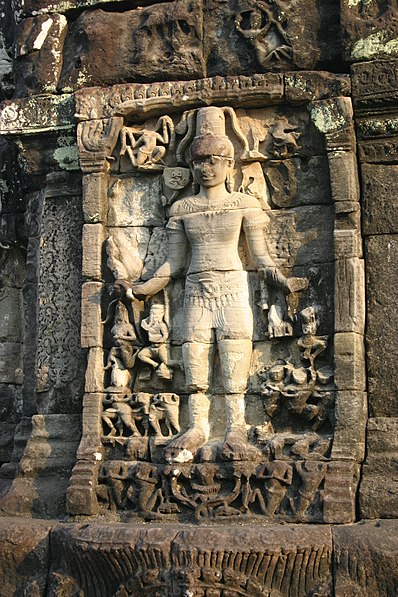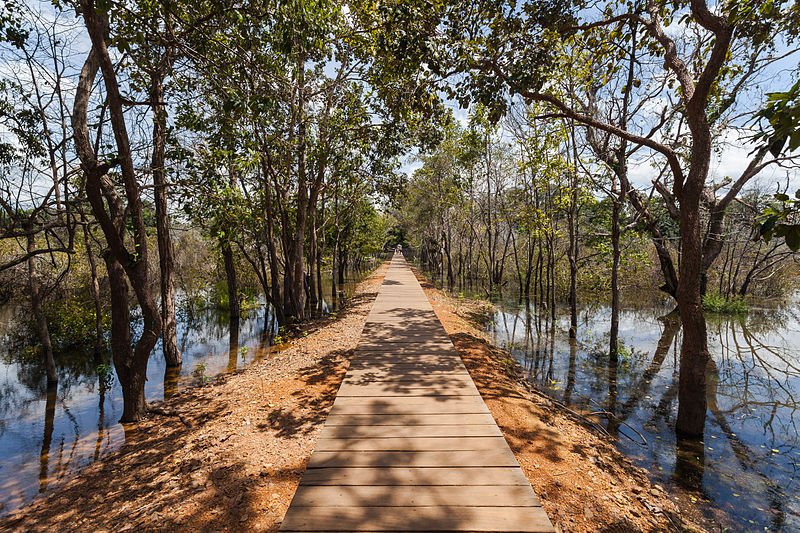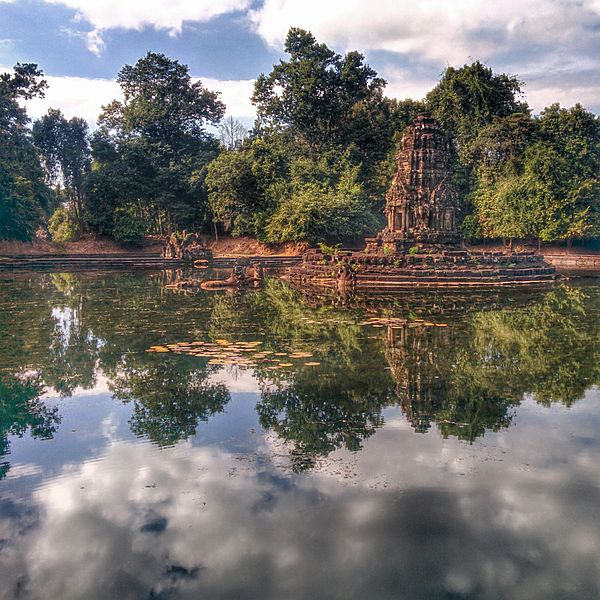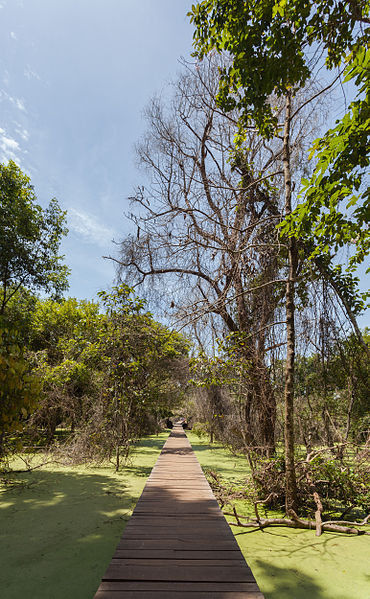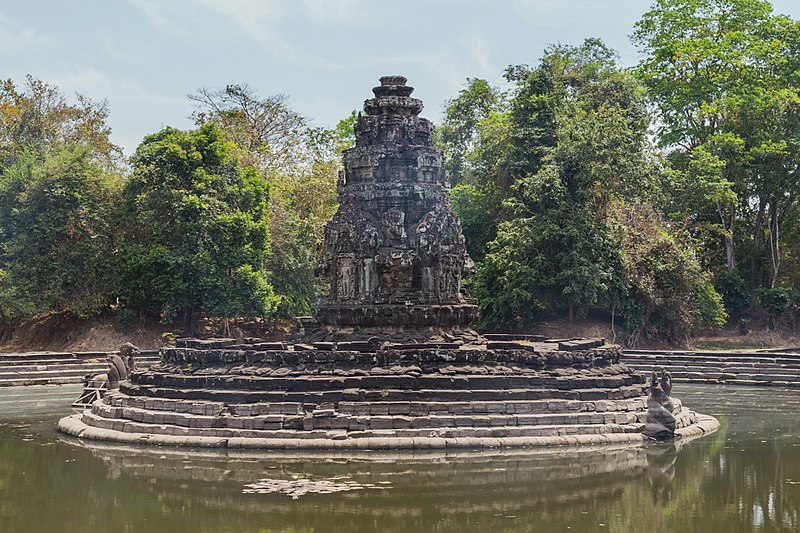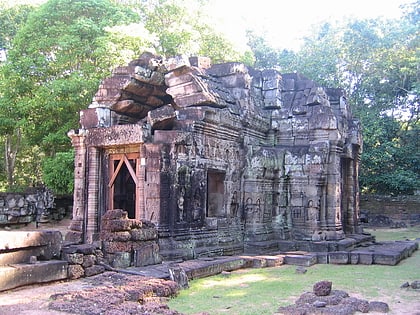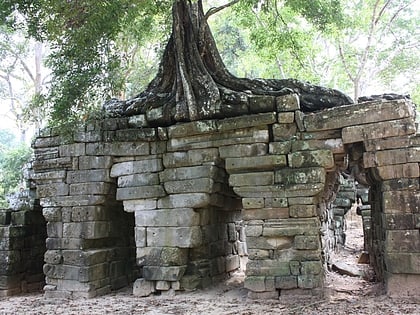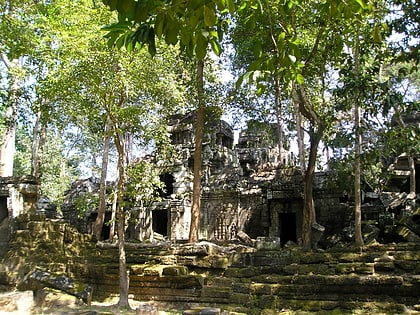Neak Pean, Siem Reap
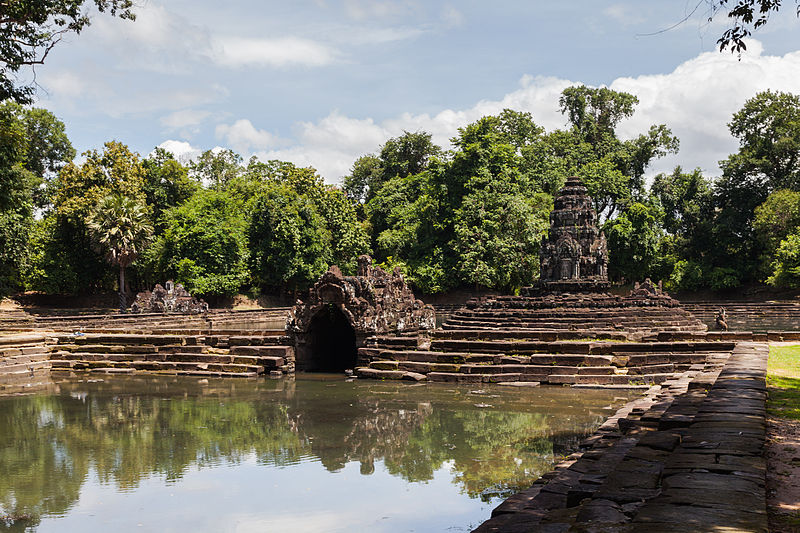
Facts and practical information
Nestled in the ancient city of Angkor, Siem Reap, Neak Pean stands as an extraordinary testament to the architectural ingenuity of the Khmer Empire. This unique temple, often overlooked amidst its more colossal neighbors, offers a serene and contemplative experience unlike any other in the region. Built in the late 12th century by King Jayavarman VII, Neak Pean, which translates to "The Entwined Serpents," is an artificial island with a Buddhist temple at its core.
At the heart of Neak Pean lies a central sanctuary, surrounded by four connected pools, representing water, earth, fire, and wind. The temple itself is a symbol of the mythical Himalayan Lake Anavatapta, believed in Buddhist cosmology to cure all illness. The design of Neak Pean reflects this healing ethos, with the waters once thought to have curative properties. Pilgrims would come from far and wide to bathe in the pools, seeking relief and purification.
The approach to Neak Pean is as much a part of the experience as the temple itself. Visitors traverse a wooden walkway that crosses the verdant and often waterlogged plains, creating a sense of journeying to a secluded sanctuary. The temple's central structure is a squat tower, atop which sits a statue of the horse Balaha, a manifestation of Avalokiteshvara, who saves shipwrecked sailors from the ogresses—a further testament to Neak Pean's themes of rescue and healing.
While not as towering as the nearby Angkor Wat or as intricately adorned as the Bayon, Neak Pean's allure lies in its tranquil setting and the spiritual symbolism imbued within its waters and stones. It is a place that invites quiet reflection, away from the crowds that flock to Siem Reap's more famous sites.
Angkor WatSiem Reap
Neak Pean – popular in the area (distance from the attraction)
Nearby attractions include: Ta Som, Thommanon, Chau Say Tevoda, Krol Ko.


